The most awe-inspiring wonders of America. Below is the list of top 10 wonders of America, including the Grand Canyon, Yosemite, Yellowstone, Niagara Falls and the Carlsbad Caverns. These are some best tourist attractions in U.S.A. Have a look.
List of Top 10 Awe-Inspiring Wonders of America:
10. Times Square at Night
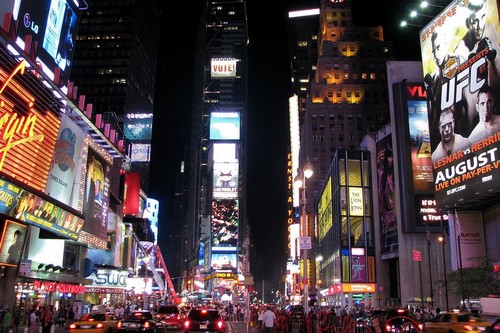
Although Times Square in New York City is ordinary by day, it turns into a dazzling universe of flashing neon and huge billboards at night. Yes, Times Square is glitzy, not esthetic, but it’s a unique spectacular sight that everyone should experience at least once.
9. Walt Disney World
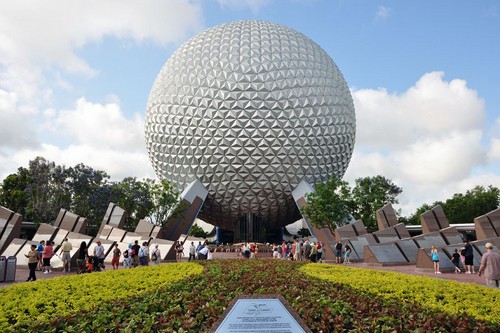
Walt Disney World or simply Disney World, is an entertainment complex that opened October 1, 1971, in Lake Buena Vista, Florida. Over 52.5 million annual visitors make Walt Disney World the most popular entertainment destination on earth. It covers 25,000 acres (10,117 ha; 39 sq mi), in which it houses 24 themed resorts, four theme parks, two water parks, and several additional recreational and entertainment venues. Its energy and fun spirit appeal to kids of all ages, from 3 to 99.
8. Smithsonian Institution
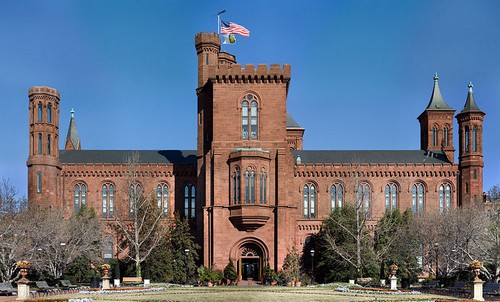
The Smithsonian in Washington, D.C. is the largest and one of the finest museum complexes in the world. It has 19 major museums, a national zoo, and a number of research centers. It was established in 1846 “for the increase and diffusion of knowledge.” The Institution’s thirty million annual visitors are admitted without charge; funding comes from the Institution’s own endowment, private and corporate contributions, membership dues, government support, and retail, concession and licensing revenues.
7. Yosemite National Park

One of the largest and least fragmented habitat blocks in the Sierra Nevada, and the park supports a diversity of plants and animals. Established on October 1, 1890, Yosemite National Park covers an area of 761,268 acres (3,080.74 km2). Over 3.7 million people visit Yosemite each year: most spend their time in the seven square miles (18 km2) of Yosemite Valley. The valley is internationally recognized for its spectacular granite cliffs, waterfalls, clear streams, Giant Sequoia groves, and biological diversity. The Yosemite Valley has been inhabited for nearly 3000 years. The Paiute and Sierra Miwok people lived in the area long before the first explorations by American settlers into the region. A band of Paiute called the Ahwahneechee were living in the Yosemite Valley when the first known group of European Americans entered it.
6. Niagara Falls

It is one of the mightiest falls on earth. Although Niagara Falls is smaller and less breathtaking than Iguazu Falls in South America and Victoria Falls in Africa, it is awe-inspiring in its own right. Niagara Falls is the collective name for three waterfalls that straddle the international border between the province of Ontario and the state of New York. With the highest flow rate of any waterfall in the world, Niagara Falls are renowned both for their beauty and as a valuable source of hydroelectric power.
See also; Top 10 Natural Wonders of the World.
5. New York Skyline

New York City has the world’s most recognized skyline. Its buildings soar upward, as if sprouting. This occurs in two Manhattan clusters, midtown and downtown, with a “valley” of low buildings in between. Midtown Manhattan, the largest central business district in the world, is home to such notable buildings as the Empire State Building, the Chrysler Building, Citigroup Center and Rockefeller Center. Lower Manhattan comprises the third largest central business district in the United States. Lower Manhattan was characterized by the omnipresence of the Twin Towers of the World Trade Center from its completion in 1973 until its destruction in the September 11 attacks, 2001.
4. Yellowstone National Park
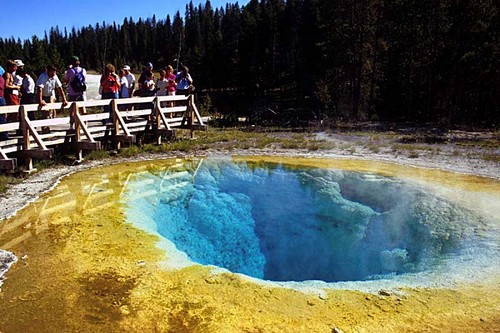
It is the first officially designated national park on our planet. Yellowstone, widely known for its wildlife and its many geothermal features, especially Old Faithful Geyser, one of the most popular features in the park. Located primarily in the state of Wyoming, although it also extends into Montana and Idaho. It was established in 1872.
Yellowstone National Park spans an area of 3,468.4 square miles (8,983 km2), comprising lakes, canyons, rivers and mountain ranges. Yellowstone Lake is one of the largest high-altitude lakes in North America. And is centered over the Yellowstone Caldera, the largest supervolcano on the continent. It has erupted with tremendous force several times in the last two million years. Half of the world’s geothermal features are in Yellowstone, fueled by this ongoing volcanism. Native Americans have lived in the Yellowstone region for at least 11,000 years. The region was bypassed during the Lewis and Clark Expedition in the early 19th century.
3. Metropolitan Museum of Art
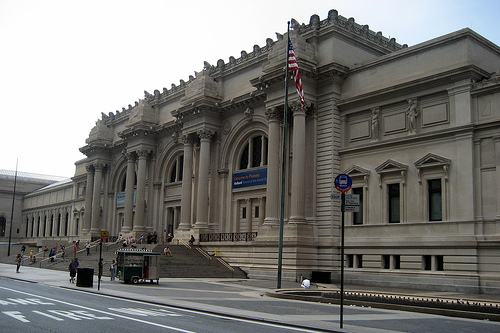
The Metropolitan Museum of Art, located in New York City. It is the largest art museum in the United States, and one of the ten largest in the world, with the most significant art collections. Its permanent collection contains more than two million works, divided among seventeen curatorial departments. The main building, located on the eastern edge of Central Park along Manhattan’s Museum Mile, is by area one of the world’s largest art galleries. The Met’s Museum of Art was founded in 1870 by a group of American citizens.
2. Carlsbad Caverns

At the Chihuahuan desert’s northern reaches, underneath the Guadalupe Mountains, lies one of the deepest, largest, and most ornate caverns ever found. The Carlsbad Cavern, named Carlsbad Caverns National Park, located in the Guadalupe Mountains in southeastern New Mexico. It includes a large cave chamber; The Big Room, a natural limestone chamber which is almost 4,000 feet (1,220 m) long, 625 feet (191 m) wide, and 255 feet (78 m) high at the highest point. It is the third largest chamber in North America and the seventh largest in the world.
Water molded this underworld four to six million years ago. Some 250 million years ago, the region lay underneath the inland arm of an ancient sea. Near the shore grew a limestone reef. By the time the sea withdrew, the reef stood hundreds of feet high, later to be buried under thousands of feet of soil. Some 15 to 20 million years ago, the ground uplifted. Naturally occurring sulfuric acid seeped into cracks in the limestone, gradually enlarging them to form a honeycomb of chambers. Millions of years passed before the cave decoration began. Then, drop by drop, limestone-laden moisture built an extraordinary variety of glistening formations—some six stories tall; others tiny and delicate. (travel.nationalgeographic.com).
1. Grand Canyon
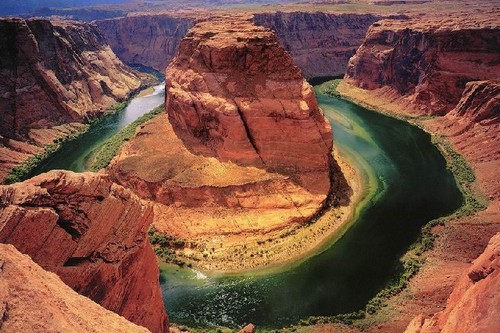
The Grand Canyon is a steep-sided canyon carved by the Colorado River in the state of Arizona. It is among the earth’s greatest on-going geological spectacles and the most spectacular gorge in the world. At its extremes, the Grand Canyon is 446 kilometers (277 miles) long, up to 29 kilometers (18 miles) wide from rim to rim, and over 1600 meters (a mile) deep. Its horizontal strata retrace the geological history of the past 2 billion years.
There are also prehistoric traces of human adaptation to a particularly harsh environment. For thousands of years, the area has been continuously inhabited by Native Americans who built settlements within the canyon and its many caves. The Pueblo people considered the Grand Canyon a holy site and made pilgrimages to it. The first European known to have viewed the Grand Canyon was García López de Cárdenas from Spain. Who arrived in 1540.


0 Comments